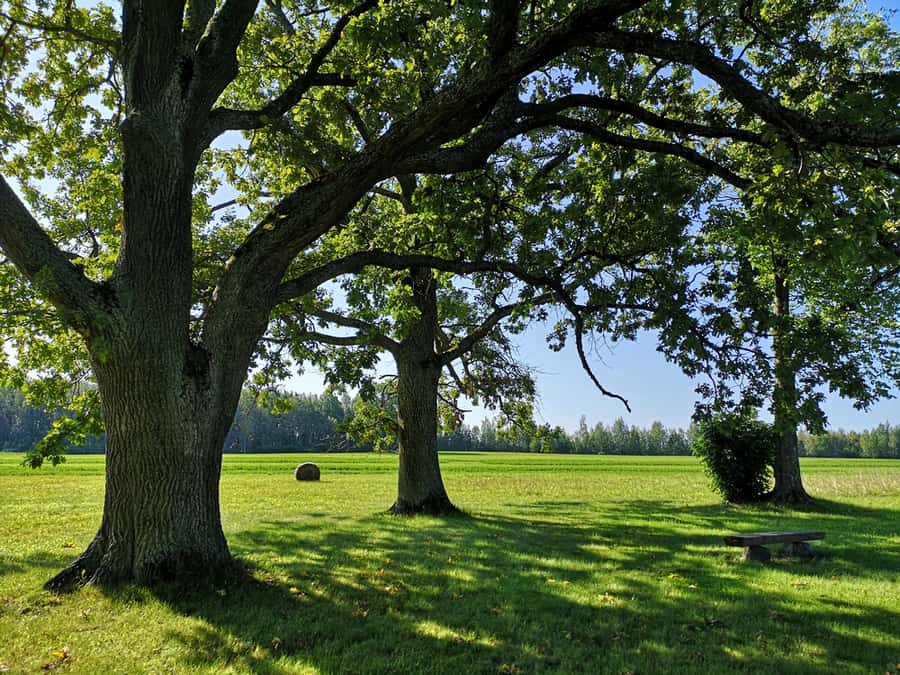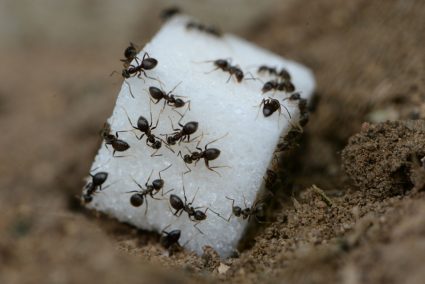
Living in nature is a complex and diverse process. One of the interesting elements of this complexity is the idea that one has to deal with various inhabitants of nature. Among these inhabitants, roaches are one of the most common pests.
Roaches can live in various habitats and have been observed in many different types of trees. So is the trees their ideal environment, or what kind of trees do roaches live in?
This article will explore different types of trees that roaches may inhabit and why they choose certain tree species over others.
We will also discuss the implications for homeowners and pest control professionals trying to combat roach infestations in their vicinity.
Roaches are one of the most resilient insects. They can survive in various environments, from forests to kitchen counters. But, as it turns out, roaches also like to make some trees their homes. But which types of trees do these pests prefer?
The answer is complex; there isn’t just one kind of tree that roaches live in. They can inhabit any tree species that provide enough warmth and shade to thrive.
So from oaks and elms to birches and firs, there are plenty of trees where you can find roaches living comfortably. When determining what kind of trees provide ideal nesting spots for roaches, the key factors are shelter and temperature.
This article will explore what kind of trees roaches live in and how they choose their habitats.
Finally, we will examine their preferences and needs when finding the perfect tree for them to make a home.
In the next sections of the article, there will be a brief guide about different trees that are more likely to be used as residences by roaches. The end will include a detailed summary and discussion of frequently asked questions about roaches.
8 Trees That Attract Roaches Most

Trees provide a variety of habitats for animals and insects, including roaches. Roaches are commonly found in homes but can also live outside interest.
Generally speaking, Roaches are not picky in their tree habitat. They can be found in various trees, Including deciduous, coniferous, and fruit trees.
Roaches will typically inhabit the lower parts of the trunk or any crevices or cracks in the bark that provide shelter from predators and varying temperatures.
Roaches tend to favor wetter climates with plenty of moisture to stay hydrated. Therefore, You may find more roaches in tropical regions with higher humidity than in other areas.
Below are some trees that could be more likely to nest places for roaches:
1. Palm Tree

Roaches are attracted to certain kinds of trees, including palm trees. Palm trees have a height that provides safety for roaches from predators.
As well, their bark is porous and easy for roaches to gain access into.
Additionally, palm trees provide abundant food sources such as nectar and fruits for the roach population to feast on.
Finding ways to reduce the number of roaches in your area should include removing nearby palm trees, if possible, or food sources attracting these pests.
2. Oak Tree

The oak tree is popular among homeowners for its classic beauty and shade, but it may also attract unwitting roaches.
Roaches are one of the most familiar home pests and can be difficult to rid of a home once they have taken up residence.
While oak trees are not necessarily the only type that can attract roaches, they offer an ideal habitat due to their thick foliage and moist bark.
In addition, the crevices in the bark protect from predators and offer shelter from the sun, making them attractive to these unwelcome guests.
In addition, Oak leaves are a source of food for some species of roaches, further increasing their chances of residence around or even inside your home.
3. Poplar Tree

Roaches are attracted to poplar trees because they provide the shelter and food that these pests need.
Poplars have moist, humid bark, an ideal space for roaches to hide and breed. The decaying wood in poplars also provides food for the insects, making them even more attractive as a habitat.
Roaches commonly infect dead and decaying poplar trees, so it is important to know what kind of trees you have on your property.
If you have any dead or dying poplar trees on your property, remove them promptly to help prevent any potential roach infestations.
4. Willow Tree

Willow trees are a popular choice among homeowners looking for shade and privacy. But these trees can also attract roaches.
Willow trees provide a dark, damp environment, which attracts the roach population towards it. Roaches live in almost any type of tree, from pine and oak to elm and willow.
While some species prefer specific types of trees, all roaches need abundant moisture and food sources near willows.
In addition, These lush green produce fruits, nuts, leaves, and bark that nourish the pests.
Additionally, the moist soil around the base of the tree provides a safe harbor for roaches to lay eggs or seek refuge from predators or extreme temperatures.
5. Elm Tree

Roaches are drawn to elm trees for their safety and abundance of food sources. Roaches often hide in the crevices of an elm tree’s bark or make a home between the branches.
Elm trees provide a haven from predators and offer access to food from the surrounding vegetation. These trees provide many kinds of food for roaches, including small insects, sap, and even pollen.
Roaches have been known to feed on dead wood and decaying fruit that falls from an elm tree; that’s why they congregate in these areas.
Elm trees are also known to attract others types of pests, such as aphids, ants, and earwigs, which can provide additional roach feeding grounds.
6. Maple Tree

Maple trees are known for their vibrant red leaves and beautiful shape. But what many people need to learn is that they also attract roaches.
Roaches are an unwelcome pest that can infest homes and carry diseases, So it’s important to understand why maple trees attract them and what you can do about it.
Roaches tend to nest in moist areas with plenty of food sources close by. Therefore, maple trees provide a great environment for roaches since they produce sugar sap and have large piles where food particles may accumulate at the tree’s base.
Additionally, the crevices within a maple tree trunk offer ideal nesting sites for roaches to hide during daylight hours when they’re less active.
7. Banana Tree

Banana trees are a common sight in many tropical and subtropical climates. Unfortunately, it turns out that banana trees are often attractive to roaches and can be home to these pests.
Roaches enjoy a warm climate near banana trees and may find shelter under the tree’s leaves or branches. Bananas trees also provide food for roaches, as rotting fruit can attract them.
Additionally, the damp environment created by the irrigation system around banana plants is ideal for roaches looking for water resources.
For these reasons, it is important to take preventative measures against pests when cultivating banana plants.
Setting up traps or using pesticides can help keep any potential infestations at bay and ensure your banana stays pest-free!
8. Citrus Tree

Citrus trees are popular in many residential gardens due to their bright, vibrant fruit. But, unfortunately, they can also be an attractive place for roaches to live.
Roaches are drawn to the warm and humid climate that citrus trees provide, making them a prime habitat for these unwanted pests.
Citrus trees have plenty of nooks and crannies for roaches to make their homes. The bark of citrus trees is also a great hiding place as it provides enough shelter while still allowing the pest access to the tree’s abundant resources.
If you find that your citrus tree has become infested with roaches, removing them quickly before they spread throughout your yard or home is important.
Conclusion
Roaches are usually found in trees with a warm, moist environment and plenty of food.
Therefore, pine and oak trees provide the ideal conditions for roaches to thrive and reproduce.
Roaches can also be found in many other trees, shrubs, logs, and crevices.
To prevent roaches from taking up residence in your yard or garden, keeping the area clean, dry, and free of debris is best.
Frequently Asked Questions
What Are Roaches Afraid Of?
Roaches are afraid of humans and other mammals or animals bigger than them. They see us as predators, and that fear triggers their instinct to scatter away.
However, they dislike strong and distinctive scents such as citrus, peppermint, lavender, and vinegar.
What Kind of Trees Do Roaches Like To Live In?
Roaches prefer warm and moist environments, so they often seek out dark places such as closets or cupboards.
They also favor trees with thick foliage and can be found living in tree hollows or within bark crevices.
Roaches also find refuge near decaying wood or leaves that have fallen at the base of a tree trunk.
Are Roaches Attracted to Wood?
Yes, they are. Roaches use pheromones to communicate; this makes cluttered environments much more attractive to them.
Trees with wide trunks and dense foliage can be great habitats for them.











